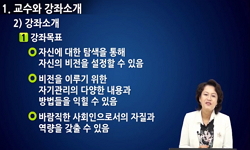The purpose of this paper is to discuss the health reform movement formed by Samuel Thomson and Sylvester Graham in early 19th century America, which tried to acquire cultural hegemony in the sphere of health care and embraced a unique religio-medical...
http://chineseinput.net/에서 pinyin(병음)방식으로 중국어를 변환할 수 있습니다.
변환된 중국어를 복사하여 사용하시면 됩니다.
- 中文 을 입력하시려면 zhongwen을 입력하시고 space를누르시면됩니다.
- 北京 을 입력하시려면 beijing을 입력하시고 space를 누르시면 됩니다.
https://www.riss.kr/link?id=A105544980
- 저자
- 발행기관
- 학술지명
- 권호사항
-
발행연도
2018
-
작성언어
Korean
-
주제어
건강개혁운동 ; 19세기 ; 새뮤얼 톰슨 ; 실베스터 그레이엄 ; 몸 ; 자기 관리 ; 미국사회 ; 의학 ; 종교 ; health reform movement ; nineteenth-century ; America ; Samuel Thomson ; Sylvester Graham ; self-care ; medicine ; religion
-
KDC
205
-
등재정보
KCI등재
-
자료형태
학술저널
-
수록면
139-168(30쪽)
- 제공처
-
0
상세조회 -
0
다운로드
부가정보
다국어 초록 (Multilingual Abstract)
In the process of analyzing the movement, I find that the health reformers Thomson and Graham tried to acquire cultural hegemony in the area of health care through writings, public lectures, and the formation of various organizations. However, while the health reform movement had the singular goal of achieving an ideal society, it was actually divided internally into two camps with regard to the source of medical knowledge and the strategic goal of the movement. Concerning the former, Thomson emphasized experience-based therapies based on folk remedies and botanic medicine, while in Graham’s case, medical knowledge was to be derived largely from objective science; i.e. ‘physiology’. With regard to the movement’s strategic goal, Thomson wanted the public to become ‘healers’ themselves by learning about practical remedies and developing their own medical expertise, while Graham envisioned perfect citizens living in optimum physical and mental health based on a clear dietetic regime and sound physiological principles. He also placed greater emphasis on the positive role of women in domestic life.
The purpose of this paper is to discuss the health reform movement formed by Samuel Thomson and Sylvester Graham in early 19th century America, which tried to acquire cultural hegemony in the sphere of health care and embraced a unique religio-medical ideology and understanding of the nature of the body.
In the process of analyzing the movement, I find that the health reformers Thomson and Graham tried to acquire cultural hegemony in the area of health care through writings, public lectures, and the formation of various organizations. However, while the health reform movement had the singular goal of achieving an ideal society, it was actually divided internally into two camps with regard to the source of medical knowledge and the strategic goal of the movement. Concerning the former, Thomson emphasized experience-based therapies based on folk remedies and botanic medicine, while in Graham’s case, medical knowledge was to be derived largely from objective science; i.e. ‘physiology’. With regard to the movement’s strategic goal, Thomson wanted the public to become ‘healers’ themselves by learning about practical remedies and developing their own medical expertise, while Graham envisioned perfect citizens living in optimum physical and mental health based on a clear dietetic regime and sound physiological principles. He also placed greater emphasis on the positive role of women in domestic life.
동일학술지(권/호) 다른 논문
-
- 한국종교학회
- 김진영(Jin-Young Kim)
- 2018
- KCI등재
-
- 한국종교학회
- 임보람(Bo ram Im)
- 2018
- KCI등재
-
『주역(周易)』의 역사(易詞) 형성과 서법(筮法)의 상관관계
- 한국종교학회
- 임재규(Jaekyu Im)
- 2018
- KCI등재
-
- 한국종교학회
- 박종천(Jong-Chun Park)
- 2018
- KCI등재






 KCI
KCI DBpia
DBpia






